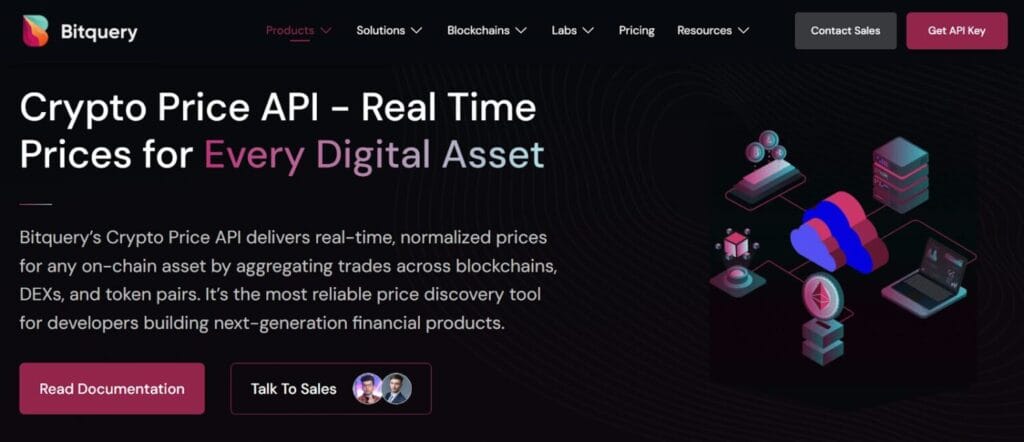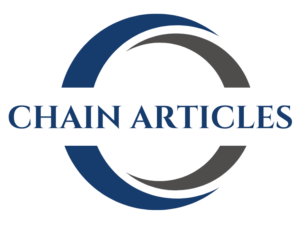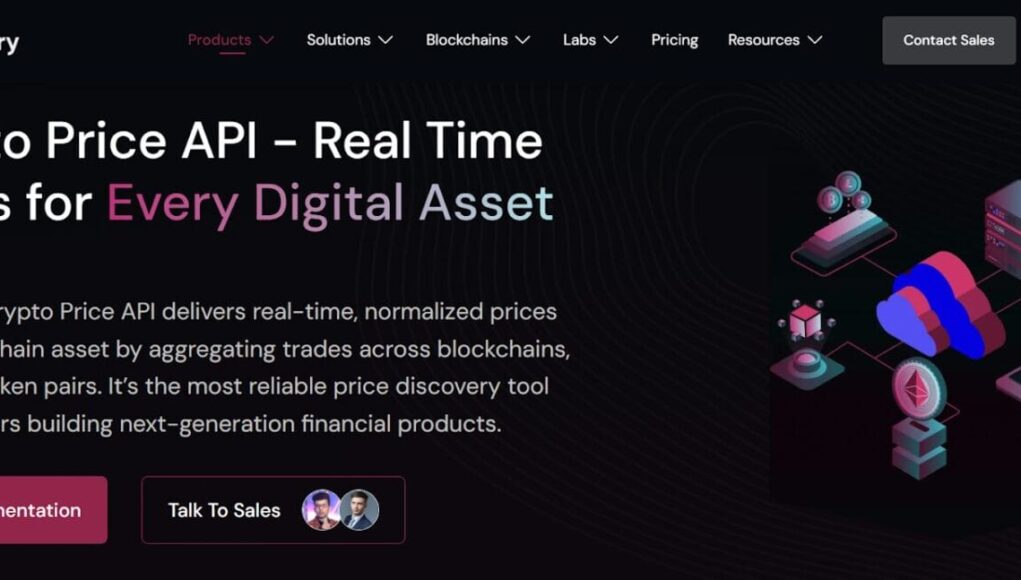Building crypto apps, such as dashboard, alert systems, and trading bots, requires access to clean and real-time price and market data. The Binance API provides such data for users, although powerful, you might want alternatives for easier pricing or broader coverage. In this article, we will cover the best alternatives to the Binance API for crypto Prices.


Bitquery’s Crypto price API provides real-time, aggregated price data with ultra-low latency across multiple trading pairs, tokens, decentralized exchanges (DEXs), and blockchains. Unlike traditional price APIs that focus on single exchanges or chains, it offers a unified view of cryptocurrency pricing across multiple chains like Solana, Ethereum, BNB, and Tron etc.
Key Features
- Multi-chain coverage: It supports multiple chains including: EVM, Solana, Tron, and other supported blockchains
- Cross-DEX aggregation : Unified pricing from hundreds of decentralized exchanges for one token including it’s bridged versions
- Ultra-low latency : Sub-second data delivery (within 500ms)
- Pre-aggregated analytics : OHLC, moving averages, and technical indicators ready out-of-the-box
- Clean data feeds : Automatic filtering of bad trades and outliers
- Flexible delivery : GraphQL queries, WebSocket streams, and Kafka topics.
Comparing Bitquery to Binance API
Data Coverage
- Binance API provides users activity that happens inside the Binance exchange. It offers data from spot, futures, and margin markets, as well as account information like balances, orders, and trade history, which is limited to Binance’s ecosystem.
- Bitquery, on the other hand, indexes activity across multiple blockchains which includes EVM chains like Ethereum, BSC, and Polygon, as well as non-EVM chains like Solana and Ton. With this, Bitquery captures token transfers, DEX trades, liquidity pool updates, smart contract calls, and on-chain instructions, providing far broader visibility.
Historical Data
- Binance offers limited historical data, which gives developers access to fetch candlestick histories, symbol trade histories, and order book snapshots, which are narrow and short-lived.
- Bitquery, in contrast, provides full blockchain history via its APIs, granting users access to raw events alongside enriched datasets such as OHLCV metrics, token supply changes, and DEX trading volumes. This makes it much stronger for forensic analysis, compliance auditing, or building historical analytics dashboards.
Real-Time Data
- Binance provides real-time data through WebSocket streams. These include live trades, order book depth updates, candlestick feeds, and authenticated account events.
- Bitquery also supports live streaming, but through GraphQL subscriptions and Kafka streams. These streams cover token transfers, swaps, liquidity events, and block-level activity. Latency is typically below one second via Kafka, which is still fast enough for most DeFi monitoring and analytics use cases, especially since the data is already parsed and enriched.
Data Types
- The scope of Binance’s API data types is limited to exchange-centric elements: trades, aggregated trades, order book depth, candlestick prices, and account balances.
- Bitquery, however, grants users access to blockchain-wide data. Developers can access token transfers, DEX swaps, contract logs, liquidity pool updates, and even cross-chain events.
Query Flexibility
- Binance’s streams are tied to individual symbols such as BTCUSDT or ETHUSDT. Developers have to aggregate and filter data themselves on the client side. The REST API is similarly scoped to specific trading pairs.
- Bitquery provides a more flexible model through GraphQL queries. Developers can filter by blockchain, address, contract, event type, or transaction value. This reduces the need for client-side filtering and makes it easier to build targeted data pipelines.
Bitquery’s Streaming Solutions
Bitquery offers two enterprise-grade streaming options that give users access to real-time, low-latency data, crucial for applications ranging from high-frequency trading to DeFi monitoring.
With features like:
- Sub-2 second latency with cloud-optimized infrastructure
- Advanced filtering capabilities at the GraphQL level
- Pre-parsed and enriched data including USD values and protocol information
- Historical + real-time data access through a unified API
- Zero infrastructure management required
With features like:
- Ultra-low latency: Sub-second delivery
- Enterprise scalability: Handles millions of transactions per second
- Protocol Buffers: Structured data format for efficient processing
- Built-in reliability: Kafka’s rebalancing takes care of managing partitions that go out of order. Even if you miss data, you can always backfill.
- Guaranteed ordering: Critical for trading and financial applications
Key Advantages
Key advantages of these streaming solutions include:
Ultra-Low Latency Processing
Bitquery’s Kafka infrastructure delivers sub-second latency, crucial for applications processing billions in daily trading volume. The system provides access to unconfirmed transactions, enabling early market signals before block finalization.
Enterprise Scalability
The distributed Kafka architecture handles massive throughput with:
- Built-in replication and automatic failover
- Auto-scaling from thousands to millions of transactions per second
- No infrastructure management overhead
Development Efficiency
- No node management : Zero setup time compared to weeks of infrastructure setup
- Pre-parsed data: Eliminates complex parsing work
- Rich filtering: Target specific addresses, tokens, or protocols
- Multi-chain support: Unified API across Ethereum, Solana, BSC, and more
Real-World Applications
Bitquery’s streaming infrastructure powers various applications:


CoinGecko is an independent crypto data aggregator that is integrated with more than 1,000 crypto exchanges and lists more than 18,000 coins across 600+ categories. The CoinGecko API is an interface that offers the most comprehensive and reliable crypto market data through RESTful JSON endpoints. It allows developers to query token prices, trading volumes and other metrics across 250+ blockchain networks, 1,700+ decentralized exchanges (DEXes), and 15M+ tokens, powered by GeckoTerminal.
Use cases for the CoinGecko API include:
- Crypto Exchanges (CEX, DEX), Trading Apps
- Wallets (Hot, Cold)
- Data Aggregator, Crypto Screener, Analytics Dashboard
- AI Agents, DeFAI Apps
- Block Explorer, Portfolio Tracker
- DeFi Protocols, NFT Marketplaces, Digital Bank
- Backtesting Trading Strategy
- Accounting, Tax, Audit, HR Payroll
- Research & Analysis: Media, Institution, Academic, VC, Financial
- Oracles, Bots, Payments, E-commerce
Key Features include:
- Support for over 10,000+ cryptocurrencies and 700+ exchanges.
- Provides real-time token prices in multiple currencies.
- Provides data about token-to-token exchange rates.
- OHLCV (Open, High, Low, Close, Volume) data.
- Historical market cap and volume.
- Token Metadata


The CoinMarketCap (CMC) API provides powerful endpoints built to handle the data needs of developers, data scientists, and enterprises. It offers users fast, reliable access to real-time cryptocurrency and exchange market data, along with historical datasets.
Key features
- Comprehensive Coverage: It gives users access to all cryptocurrencies and exchanges listed on CoinMarketCap
- High-Frequency Updates: Most endpoints refresh every minute, ensuring near real-time insights.
- Multi-Currency Support: Market pricing data are displayed in over 93 fiat currencies and 4 precious metals.
- Historical Data: It gives developers and analysts access to years of historical data.


CoinAPI is a crypto platform that is designed to provide multiple APIs in a single platform. With this, it removes the need for users to choose between various API providers, making it easy for crypto users to access the data and tools they need for their use cases. This saves time and resources, giving users more flexibility to use crypto APIs effectively.
Key Features
- Market Data API: This provides unified real-time and historical crypto data in one low-latency API for execution, backtesting, and research.
- Indexes API: This gives users access to institutional-grade indexes for NAV, strategy tracking, and performance analysis across assets and venues.
- EMS Trading API: This allows users to centralize execution with smart routing and order management built for high-frequency and institutional trading.
- Flat Files: This gives users access to bulk historical data in ready-to-use files, perfect for long-term backtesting, ML training, or audits.
- Exchange Rates API: Provides users with accurate, up-to-date spot and historical rates for accounting, compliance, and reporting.
- Exchange Link: This unifies private exchange APIs into a single connection to simplify operations and scale faster.


CryptoCompare is a cryptocurrency data provider that offers users real-time and historical data on digital assets. This data helps traders, developers, and businesses access real-time information about crypto markets, making it easy for them to analyze trends, build applications, or power financial products.
Key features
- Comprehensive Data Depth and Connectivity: It has extensive data coverage, which encompasses centralized and decentralized spot, futures, and options exchanges.
- Precision and Quality: The API functions with unique accuracy, ensuring data obtained is correct and up to data.
- Versatility: Users can transition seamlessly between different endpoints, each optimized for distinct needs.
- Interface Consistency: It has a consistent interface that ensures users can effortlessly retrieve and analyze data, all the parameters and response formats are clearly defined and consistent.
- Multiple Exchange Access: It easily pulls data from multiple exchanges (spot, futures, options, defi) without the need for users to understand each of their internal formats, API inconsistencies, API migrations or having to deal with lengthy contract negotiations.
- Unified Format: Data is offered to users in unified format to provide a seamless experience across the board.
- Standardized Instrument Mapping: This guarantees that the data fetched matches exactly with the instrument specified by the user. This eradicates inconsistencies related to asset listings, such as SYMBOL/TICKER and NAME, across exchanges.
Binance’s API is powerful, but it isn’t the only option available for reliable crypto price data. There are stronger alternatives you could pick from, all depending on your needs. Before choosing an alternative, Ensure you put your project’s goals, budget, and performance requirements into consideration.







